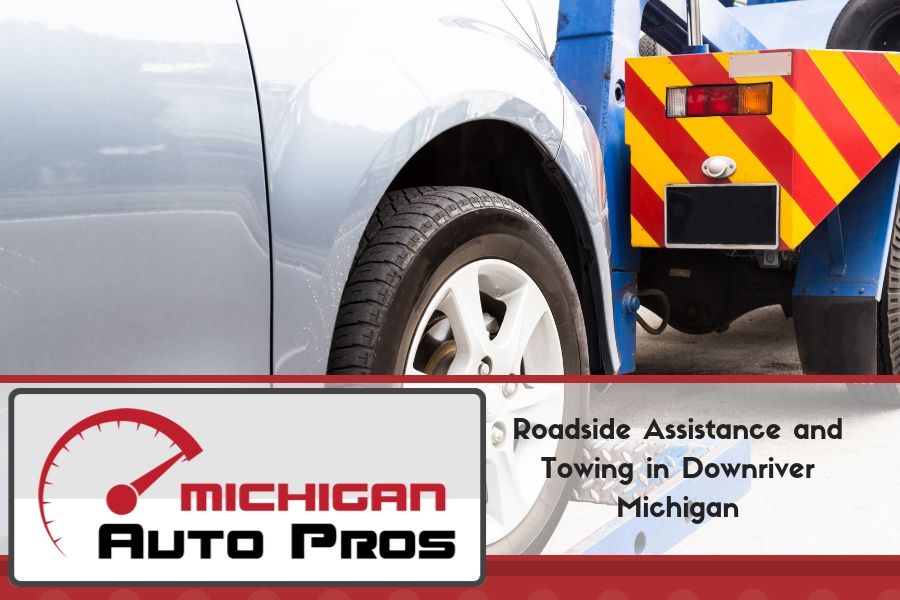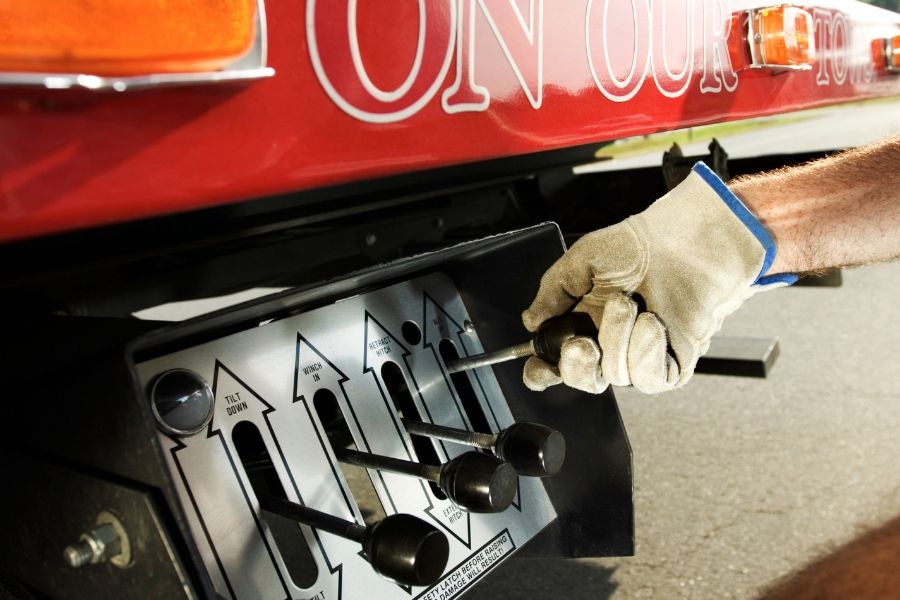Being sidelined while driving is a real pain. At best, sitting in the breakdown lane is a massive inconvenience. But it’s also a very real safety concern. In fact, roadside fatalities have increased on a yearly basis due in part to improper planning when stranded on the sideline. As roads become more congested and drivers increasingly distracted, safety should be your absolute number one priority. Getting roadside assistance quickly and if needed, getting towing in Downriver Michigan to get you to safety is important. Let’s examine a few of the obstacles you should be aware of should you find yourself sitting in a broken car.
Roadside Assistance and Towing in Downriver Michigan
The first order of business is ensuring your vehicle is safely out of the way. If your car breaks down on a back road or one that is less frequently traveled, you should still try to ensure it is as far out of the way as possible. Depending on the vehicle’s condition, you may have to push it to the side of the road. Obviously, this is easier with two people but can still be done solo. Make sure the car is in neutral and the steering wheel is turned towards the shoulder of the road to avoid possibly rolling it into oncoming traffic. If the road is heavily crowned, angled, or has a steep grade, you should weigh the probability of the car getting away from you and proceed with caution. To maximize your visibility, turn on your hazard lights and headlights. Some drivers keep cones or even flares in their trunk, and this would be an excellent time to deploy them.

Get out or stay put?
It’s generally advised to wait inside your vehicle until help arrives. If you’re able to safely move the vehicle to the side of the road, you may consider getting out to try and flag down help or make yourself more visible. Proceed with extreme caution when exiting the vehicle, and ideally wait on the side of the car furthest from traffic.
If you’re unable to move the vehicle, wait inside. Oftentimes motorists will attempt to diagnose the problem by exiting the vehicle and having a look under the hood. This can be extremely dangerous – especially in high traffic areas. If you must exit, always double and even triple-check that you are not stepping out into oncoming traffic. This may sound obvious, but amidst the stress of a broken vehicle it could easily be overlooked.
Smoke, Fuel and Fire
If you smell gasoline or see smoke billowing from under the hood, or worse – fire, you need to act fast. The likelihood of a modern car bursting into flames or exploding is a slim but very real concern. Gasoline is extremely volatile and even the fumes can combust, so a strong gasoline odor following a breakdown is a compelling reason to exit the vehicle even if no smoke or fire is apparent.
If you smell fuel or see smoke or flames, get away from the vehicle as quickly as possible. Your safety and the safety of those nearby is at stake.
Attempt A Repair
Unless you know specifically what the issue is, attempting a roadside repair is generally ill-advised. A motorist crouched beside his or her car in the breakdown lane beside 60-plus mile-per-hour traffic can be difficult to spot. If you have the “luxury” of breaking down on the road less traveled and a simple fix like a tire change is in your roadside repertoire, then by all means – proceed. But if you’re uncertain or unfamiliar with repairing your vehicle, it’s best to wait until help arrives rather than risk further damage or put yourself in harm’s way.
Safety Checklist
Knowing what to do in the event of a breakdown should be at the top of every responsible driver’s list, and keeping a few basic items in your trunk can be the difference a major drag and a true disaster.
Cars fail at seemingly random times, and it’s not always under ideal conditions. Keeping a blanket handy could go a long way if you break down in the middle of the winter and help is more than an hour away. While you’re at it, consider a high-visibility vest (like the blaze orange colors worn by construction crews) to maximize safety should you have to exit the vehicle amidst heavy traffic.
These days, cellphones are commonplace. They truly come into their own when you need emergency assistance, especially if you’re stranded in a remote area. Several manufacturers provide battery back-up powerpacks for cellphones, which can be critical if your phone is near dead and the car won’t turn on. Consider purchasing one and storing it in your vehicle in case of an emergency. Just be sure to check periodically that it is fully charged.
Lastly, a flashlight, some traffic cones, and a couple of flares never hurt. These items will give you maximum visibility to help ensure the safety of you and your passengers.
If your vehicle breaks down, don’t panic. We at Good Care Auto understand things can go wrong, and we’re here to help. Whether you’ve managed to move your car to the side of the of the road, or are stranded in the center, Good Care Auto staffs round-the-clock roadside assistance. From a simple dead battery to a seized engine, we can get you to safety, quickly. We offer fast, affordable, and reliable roadside assistance and towing. Our technicians are standing by to assist. Call Good Care Auto today at (734-285-1188) and let us get you back on the road!
